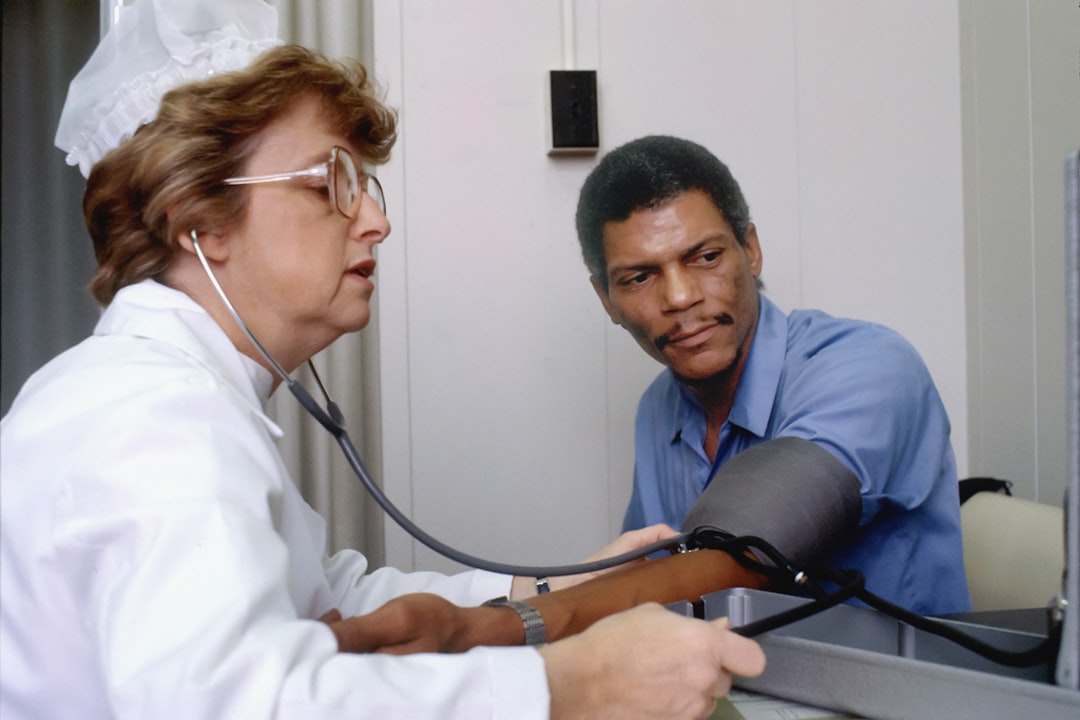Chest pain
Understand the causes, symptoms, and treatments of chest pain. Learn when to seek medical help to ensure your heart and health are protected.
Related Products
Understanding Chest Pain: A Complex Symptom Requiring Careful Evaluation
Chest pain is a common yet potentially serious symptom that can signal a range of health issues, from minor concerns to life-threatening conditions. Understanding the complexity of chest pain is crucial for both patients and healthcare providers to ensure timely and appropriate medical intervention.
Anatomical Complexity
The human chest houses vital organs such as the heart and lungs, as well as important blood vessels, muscles, and bones. This anatomical complexity contributes to the diverse nature of chest pain, which can manifest in various forms:
- Sharp, stabbing sensation
- Dull ache
- Feeling of pressure or tightness
Cardiac Considerations
One of the most critical aspects of chest pain is its potential link to cardiac issues. While not all chest pain is heart-related, it's often the first symptom that comes to mind due to the serious nature of cardiovascular problems. This association underscores the importance of seeking immediate medical attention when experiencing chest discomfort, especially if accompanied by:
- Shortness of breath
- Nausea
- Radiating pain to the arm or jaw
Non-Cardiac Causes
It's equally important to recognize that chest discomfort can stem from numerous non-cardiac sources, including:
- Gastrointestinal issues (e.g., acid reflux)
- Respiratory conditions (e.g., pneumonia)
- Musculoskeletal problems (e.g., costochondritis)
The diversity of potential causes highlights the need for a thorough diagnostic approach to accurately identify the underlying issue.
Diagnostic Approach
The diagnosis of chest discomfort involves a comprehensive evaluation that typically includes:
- Detailed medical history
- Physical examination
- Diagnostic tests:
- Electrocardiograms (ECGs)
- Blood tests
- Imaging studies (chest X-rays, echocardiograms)
- Advanced tests (stress tests, angiograms) when necessary
Treatment
The treatment approach for chest discomfort varies widely depending on the underlying cause:
- Cardiac-related chest pain: Immediate interventions may include medications to improve blood flow to the heart or procedures to open blocked arteries.
- Non-cardiac causes: May require different treatments, such as antacids for acid reflux or antibiotics for respiratory infections.
Psychological Considerations
Chest discomfort can sometimes be a symptom of psychological conditions such as anxiety or panic disorders. While these causes are not physically dangerous, they can be distressing and may require appropriate mental health interventions.
Conclusion
Chest pain is a complex symptom that requires careful evaluation and often necessitates prompt medical attention. Its potential to signal serious health issues makes it a symptom that should never be ignored. By understanding the diverse nature of chest discomfort and seeking timely medical care, individuals can ensure they receive the appropriate diagnosis and treatment, potentially preventing serious complications and improving overall health outcomes.
- Chest Pain or Discomfort - Clinical Methods - NCBI Bookshelf. Retrieved from https://www.ncbi.nlm.nih.gov/books/NBK416/
- Acute Chest Pain in Adults: Outpatient Evaluation - AAFP. (2020, December 15). Retrieved from https://www.aafp.org/pubs/afp/issues/2020/1215/p721.html
- Chest Pain: Causes, Diagnosis, and Treatment - Healthline. Retrieved from https://www.healthline.com/health/chest-pain
- Diagnosing the Cause of Chest Pain - AAFP. (2005, November 15). Retrieved from https://www.aafp.org/pubs/afp/issues/2005/1115/p2012.html
🕓 Last Updated: 7/5/2024 9:47:36 PM
Understanding the Diverse Manifestations of Chest Discomfort
Chest pain is a complex symptom that can manifest in various ways, often causing concern due to its potential association with serious health conditions. The diverse nature of chest discomfort symptoms underscores the importance of paying close attention to their specific characteristics, as these can provide crucial clues about the underlying cause.
Key Aspects of Chest Discomfort
Location and Radiation
- Typically felt in the chest area
- Can radiate to:
- Arms
- Neck
- Back
- Jaw
- Abdomen
Note: Discomfort radiating to the left arm is often associated with heart-related issues.
Quality of Pain
- Dull, heavy sensation
- Sharp, stabbing pain
- Crushing feeling
- Pressure or tightness
Aggravating and Relieving Factors
- Pain worsening with physical exertion and improving with rest may suggest cardiac origin (e.g., angina)
- Environmental triggers:
- Cold weather
- Emotional stress
- Response to medications or self-care measures
Associated Symptoms
- Respiratory: Cough, shortness of breath
- Cardiovascular: Sweating (diaphoresis)
- Gastrointestinal: Difficulty swallowing, nausea, vomiting
- Psychological: Anxiety or panic symptoms
Duration and Frequency
- Short-lived episodes (less than an hour)
- Persistent pain lasting for months
- Recurrent discomfort with decreasing levels of physical activity over time
Importance of Professional Evaluation
It's crucial to emphasize that accurate interpretation of these symptoms often requires professional medical evaluation. The complexity and potential seriousness of chest discomfort mean that self-diagnosis can be risky. Any persistent or concerning chest pain symptoms warrant prompt medical attention to ensure timely diagnosis and appropriate treatment.
Conclusion
Understanding the varied manifestations of chest discomfort symptoms is vital for both patients and healthcare providers. By recognizing the nuances in location, quality, aggravating factors, associated symptoms, and patterns of occurrence, individuals can provide more detailed information to their healthcare providers, potentially leading to more accurate and timely diagnoses. This awareness can be crucial in distinguishing between benign conditions and life-threatening emergencies, ultimately contributing to better health outcomes.
- Chest Pain or Discomfort - Clinical Methods - NCBI Bookshelf. Retrieved from https://www.ncbi.nlm.nih.gov/books/NBK416/
- Causes of Chest Pain & Tightness - WebMD. (2024, June 6). Retrieved from https://www.webmd.com/pain-management/whats-causing-my-chest-pain
- Acute Chest Pain in Adults: Outpatient Evaluation - AAFP. (2020, December 15). Retrieved from https://www.aafp.org/pubs/afp/issues/2020/1215/p721.html
🕓 Last Updated: 7/5/2024 9:47:36 PM
Causes and Diagnosis of Chest Discomfort
Chest discomfort is a complex symptom with a wide array of potential causes, ranging from benign to life-threatening conditions. Understanding these causes is crucial for proper diagnosis and treatment.
Cardiac Causes
Heart Attack (Myocardial Infarction)
- Blocked blood flow to the heart
- Requires immediate medical attention
Angina
- Reduced blood flow to the heart muscle
- Often described as squeezing or pressure in the chest
Other Cardiac Conditions
- Pericarditis (inflammation of the sac surrounding the heart)
- Myocarditis (inflammation of the heart muscle)
- Cardiomyopathy (diseases of the heart muscle)
- Aortic dissection (tear in the inner layer of the aorta)
Non-Cardiac Causes
Gastrointestinal Issues
- Gastroesophageal reflux disease (GERD)
- Esophageal disorders (e.g., achalasia)
Pulmonary Conditions
- Pneumonia
- Pulmonary embolism (blood clot in the lung)
Musculoskeletal Causes
- Costochondritis (inflammation of rib cartilage)
Psychological Factors
- Panic attacks
- Anxiety states
Diagnostic Approach
Medical History and Physical Examination
- Nature of pain, duration, triggers, associated symptoms
- Physical signs (abnormal heart sounds, lung findings)
Diagnostic Tests
- Electrocardiogram (ECG/EKG)
- Blood tests (cardiac enzymes like troponin)
- Imaging studies (chest X-rays, echocardiograms)
- Advanced tests (stress tests, angiograms)
Treatment
Treatment varies based on the underlying cause:
- Cardiac causes: Medications (e.g., nitroglycerin, clot-busting drugs), invasive procedures
- Non-cardiac causes: Condition-specific treatments (e.g., antacids for GERD, antibiotics for pneumonia)
- Psychological causes: Therapy and/or medication
Importance of Accurate Diagnosis
- Chest discomfort can indicate life-threatening conditions
- Prompt and accurate diagnosis is crucial
- Delayed or incorrect diagnosis can lead to serious complications
Conclusion
The diverse causes of chest discomfort highlight the need for a comprehensive and systematic approach to diagnosis and treatment. By understanding these various causes and the appropriate diagnostic methods, healthcare providers can ensure timely and effective management of this potentially serious symptom. Always seek immediate medical attention for unexplained or concerning chest pain, especially if severe or accompanied by other symptoms.
- Noncardiac Chest Pain: Symptoms, Causes and Treatments - Cleveland Clinic. Retrieved from https://my.clevelandclinic.org/health/diseases/15851-gerd-non-cardiac-chest-pain
- Chest Pain: What It Feels Like, Causes & Treatment - Cleveland Clinic. (2023, June 21). Retrieved from https://my.clevelandclinic.org/health/symptoms/21209-chest-pain
- Chest Pain - StatPearls - NCBI Bookshelf. Retrieved from https://www.ncbi.nlm.nih.gov/books/NBK470557/
- Chest Pain or Discomfort - Clinical Methods - NCBI Bookshelf. Retrieved from https://www.ncbi.nlm.nih.gov/books/NBK416/
- Upper & Middle Back Pain (Thoracic) - NewYork-Presbyterian. Retrieved from https://www.nyp.org/ochspine/upper-back-pain/symptoms
🕓 Last Updated: 7/5/2024 9:47:36 PM
Preventing Chest Discomfort: A Comprehensive Approach
Prevention of chest discomfort is crucial for maintaining overall health and reducing the risk of potentially serious cardiovascular conditions. By implementing a comprehensive approach, individuals can significantly decrease their likelihood of experiencing chest pain and associated health issues.
Key Prevention Strategies
1. Quit Smoking and Limit Alcohol Consumption
- Eliminate tobacco use to reduce risk of heart disease
- Moderate alcohol intake to prevent high blood pressure and heart problems
2. Manage Underlying Health Conditions
- Control diabetes and hypertension through:
- Medication adherence
- Regular check-ups
- Lifestyle modifications
3. Maintain a Healthy Weight
- Follow a balanced diet rich in:
- Fruits and vegetables
- Whole grains
- Lean proteins
- Practice portion control
4. Regular Exercise
- Aim for at least:
- 150 minutes of moderate-intensity aerobic activity per week, or
- 75 minutes of vigorous-intensity aerobic activity per week
- Engage in activities like brisk walking, swimming, or cycling
5. Stress Management
- Incorporate stress-reduction techniques:
- Meditation
- Deep breathing exercises
- Yoga
- Ensure adequate sleep
- Maintain a healthy work-life balance
6. Regular Health Check-ups
- Schedule routine medical examinations
- Stay aware of your body and report any concerning symptoms
7. Additional Measures for High-Risk Individuals
- Take prescribed medications (e.g., aspirin, statins) as recommended
- Undergo regular cardiovascular screenings and stress tests
Importance of Consistency
While these preventive measures can significantly reduce the risk of chest discomfort, they do not guarantee complete prevention. Consistency in maintaining these healthy habits is key to long-term success in avoiding chest discomfort and related health issues.
Conclusion
Preventing chest discomfort involves a multifaceted approach encompassing lifestyle modifications, management of underlying health conditions, and regular medical care. By adopting these preventive strategies, individuals can significantly reduce their risk of experiencing chest pain and improve their overall cardiovascular health. Remember that prevention is an ongoing process, and any persistent or concerning chest pain should be evaluated by a healthcare professional promptly.
- Chest Pain: First Aid - Mayo Clinic. (2024, May 8). Retrieved from https://www.mayoclinic.org/first-aid/first-aid-chest-pain/basics/art-20056705
- Chest Pain Can Be Prevented? - Hospital Clínic Barcelona. Retrieved from https://www.clinicbarcelona.org/en/assistance/be-healthy/chest-pain/prevention
- Noncardiac Chest Pain - PMC - NCBI. Retrieved from https://www.ncbi.nlm.nih.gov/pmc/articles/PMC3099272/
- Chest Pain: Causes, Diagnosis, and Treatment - Healthline. Retrieved from https://www.healthline.com/health/chest-pain
🕓 Last Updated: 7/5/2024 9:47:36 PM
Home Remedies for Chest Discomfort: A Cautious Approach
While home remedies can provide relief for certain types of chest discomfort, it's crucial to emphasize that these should not replace professional medical evaluation, especially when the cause of the pain is unknown or potentially serious. However, for minor discomfort or when recommended by a healthcare provider, some home remedies may offer relief.
Potential Home Remedies
1. Ginger
- Anti-inflammatory properties
- Helpful for digestive-related discomfort
- Use in moderation; be aware of medication interactions
2. Turmeric Milk (Golden Milk)
- Anti-inflammatory and antioxidant properties
- Mix turmeric with warm milk and a pinch of black pepper
- May help with digestive-related discomfort
3. Cold Compresses
- Beneficial for muscle strains or inflammation
- Apply for 15-20 minutes at a time
- Wrap in towel to protect skin
4. Baking Soda Solution
- May help neutralize stomach acid
- Useful for acid reflux or indigestion
- Avoid overuse due to potential side effects
5. Hibiscus Tea
- May aid digestion and lower blood pressure
- Consult healthcare provider due to potential medication interactions
6. Aspirin
- Sometimes recommended for mild heart-related chest pain
- Only take under healthcare professional guidance
7. Garlic and Apple Cider Vinegar
- Limited scientific evidence for effectiveness
- Use cautiously; be aware of potential side effects
8. Almonds
- Sometimes suggested for acid reflux-related discomfort
- Limited scientific evidence; may worsen symptoms for some
Important Considerations
- These remedies are not suitable for all types of chest discomfort.
- Severe, persistent, or concerning chest pain requires immediate medical evaluation.
- Chest discomfort can be a symptom of serious conditions like heart attacks.
- Always prioritize understanding the underlying cause through professional medical assessment.
Conclusion
While home remedies can offer relief for minor chest discomfort in some cases, they should be used cautiously and never as a substitute for proper medical evaluation and treatment. The priority should always be to understand the underlying cause of the chest discomfort through professional medical assessment before attempting any home remedies.
- 17 Home Remedies for Chest Pain - Verywell Health. (2023, December 28). Retrieved from https://www.verywellhealth.com/chest-pain-remedies-5179658
- Chest Pain: First Aid - Mayo Clinic. (2024, May 8). Retrieved from https://www.mayoclinic.org/first-aid/first-aid-chest-pain/basics/art-20056705
- Chest Pain - StatPearls - NCBI Bookshelf. Retrieved from https://www.ncbi.nlm.nih.gov/books/NBK470557/
- 10 Home Remedies for Heart Pain - MedicalNewsToday. Retrieved from https://www.medicalnewstoday.com/articles/321133
- Chest Pain - Diagnosis and Treatment - Mayo Clinic. (2023, March 3). Retrieved from https://www.mayoclinic.org/diseases-conditions/chest-pain/diagnosis-treatment/drc-20370842
🕓 Last Updated: 7/5/2024 9:47:36 PM
Alternative Medicine Approaches for Chest Discomfort
Alternative medicine offers complementary options for managing chest discomfort, particularly for non-cardiac causes. However, these methods should not replace professional medical evaluation, especially when the cause of chest pain is unknown or potentially serious.
Key Alternative Approaches
1. Acupuncture
- May help with costochondritis or muscle strain
- Not well-established for cardiac-related discomfort
- Should not be primary treatment for heart conditions
2. Herbal Remedies
- Examples: Hawthorn for potential cardiovascular benefits
- Can interact with conventional medications
- Use only under professional guidance
3. Aromatherapy
- Essential oils like lavender or peppermint
- May help with stress-related discomfort
- Not a substitute for medical treatment
4. Mind-Body Techniques
- Meditation, yoga, and tai chi
- Beneficial for stress and anxiety-related chest discomfort
- May contribute to overall heart health
5. Chiropractic Care
- Considered for musculoskeletal-related chest pain
- Crucial to rule out cardiac causes first
6. Dietary Supplements
- Omega-3 fatty acids, coenzyme Q10, magnesium
- Potential cardiovascular benefits
- Consult healthcare provider before use
7. Biofeedback
- May help with stress or muscle tension-related chest pain
- Involves electronic monitoring of bodily processes
Important Considerations
- Not suitable for all types of chest discomfort
- Severe, persistent, or concerning chest pain requires immediate medical evaluation
- Many alternative treatments lack extensive scientific research
- Should be approached cautiously and under healthcare provider guidance
Conclusion
While alternative medicine offers various approaches to managing chest discomfort, these should be considered complementary to, not replacements for, conventional medical care. The priority should always be to understand the underlying cause of the chest pain through professional medical assessment before exploring alternative treatments.
- 17 Home Remedies for Chest Pain - Verywell Health. (2023, December 28). Retrieved from https://www.verywellhealth.com/chest-pain-remedies-5179658
- 10 Home Remedies for Heart Pain - MedicalNewsToday. Retrieved from https://www.medicalnewstoday.com/articles/321133
- Chest Pain: Causes, Symptoms, and When to See a Doctor - MedicalNewsToday. Retrieved from https://www.medicalnewstoday.com/articles/321650
- Chest Pain or Discomfort - Clinical Methods - NCBI Bookshelf. Retrieved from https://www.ncbi.nlm.nih.gov/books/NBK416/
🕓 Last Updated: 7/5/2024 9:47:36 PM
Related Products
The views and opinions expressed on Nutritionaly.com are for informational purposes only and do not necessarily reflect the official policies or positions of Nutritionaly.com. While we strive to provide valuable insights and educational content, the information on this website is not intended to be taken as professional medical advice or to diagnose, treat, or prevent any health condition. Always consult with a qualified healthcare provider before making any health-related decisions or starting any new treatment. Any reliance placed on such information is strictly at the reader’s own risk. Nutritionaly.com is not liable for the accuracy of information from third parties featured on our website. We do not endorse these external opinions, products, or services. Content may become outdated, and images are for illustrative purposes only.










